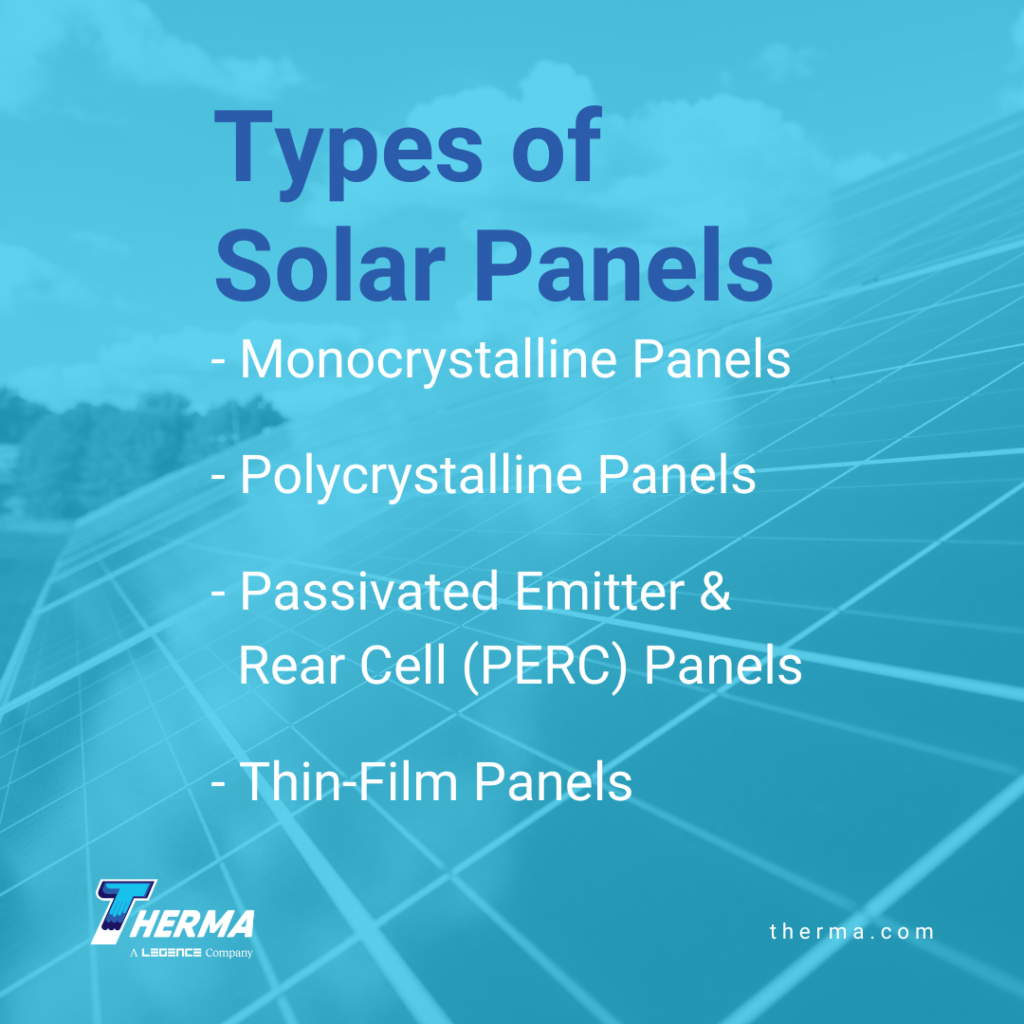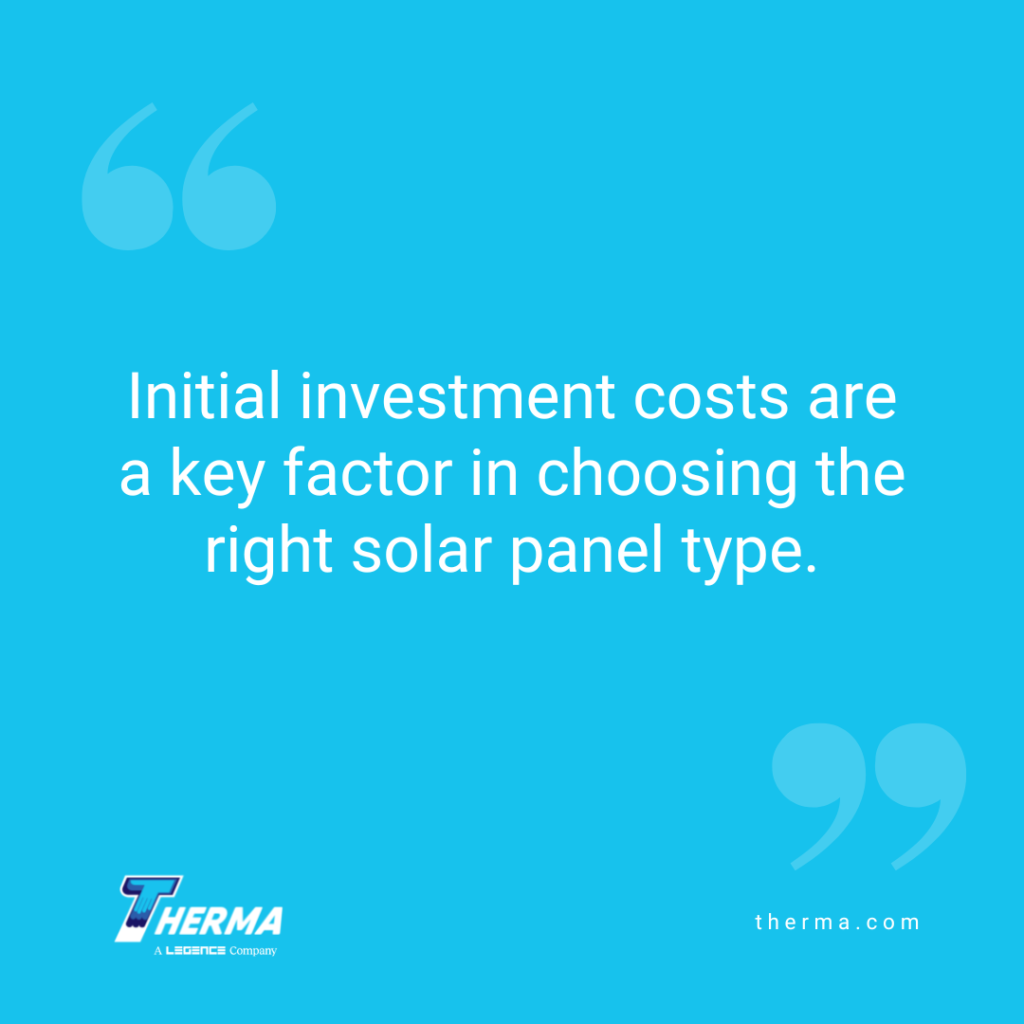by Ali Kriscenski
The market-driven demand for renewable energy has pushed solar photovoltaic (PV) forward into an era of tremendous market growth. This has led to innovations in the types of solar panels available and made the adoption of solar energy a feasible investment across residential and commercial sectors. This article looks at the different types of solar panels on the market today to help determine which is right for your facility.
How Solar PV Works
Solar photovoltaic systems gather energy from sunlight. Solar panels are the individual components that comprise a solar array. Each panel is made with layers of silicon enclosed in a frame under glass with special films. The panels are hardwired into inverters that take the silicon cells’ DC electrical current and convert it to AC electricity. In some newer systems, microinverters are integrated into the panels. The AC electrical current can be used on-site to power typical building systems such as lighting, equipment, and HVAC systems.
Solar PV systems can be grid-connected, where the excess electricity produced can be metered and sold into the utility grid. Stand-alone or off-grid systems can store electricity onsite in an electric battery tank. You can use the stored electricity when the system is producing less energy than the building demands.

Types of Solar Panels
Solar panel variations affect the efficiency, durability, and cost of solar panel systems. The four types of panels include monocrystalline, polycrystalline, PERC, and thin-film panels. The four types of panels have functionality that can be best utilized in specific applications.
Monocrystalline Panels
Monocrystalline solar panels are highly efficient and durable. The manufacturing process is not as resource efficient as other types of panels, so the trade-off is that these panels tend to carry a higher price tag.
Polycrystalline Panels
These panels are a more affordable version of monocrystalline as the silicon is molded and formed into cells rather than layered in its pure form. While this makes the initial investment more attainable, it also lowers the efficiency level of the panels. The manufacturing process also makes the panels less heat tolerant which lowers efficiency in high-temperature locations.
Passivated Emitter and Rear Cell (PERC) Panels
PERC panels incorporate a reflective layer within the panels to enhance efficiency. The design helps reduce passive heat from affecting the silicon and reflects light back into the cell. Both of these features make these panels highly efficient and effective in applications with limited space.
Thin-Film Panels
Thin-film panels use different materials than traditional solar panels. Instead of silicone, these panels can be made from
- Cadmium telluride
- Amorphous Silicon
- Copper indium gallium selenide
Thin-film panels can be used in smaller applications, such as a desk calculator or a building awning. Typically less efficient than crystalline panels, the benefits of thin-film panels are in their versatility. Thin-film panels are lightweight and flexible, making installation more cost-effective. As less efficient than crystalline panel types, they are suitable for applications with ample space.
Considerations in Choosing a Solar Panel System
Initial investment costs are a key factor in choosing the right solar panel type. Monocrystalline panels are the most expensive per watt but are also the most efficient. Polycrystalline panels, depending on the model, can be up to half the cost of crystalline but with decreased efficiency. PERC and thin-film panels are typically less expensive than crystalline panels with comparable price ranges.
Space availability is another important consideration for choosing solar panel types. Applications with wide swaths of open land can benefit from cost-effective panels like polycrystalline, which are lower efficiency but also less expensive. For limited space, panel efficiency becomes a more important factor in system sizing to meet energy loads.
Ensuring Proper System Design
With the recent market growth, solar PV companies are readily available for residential and commercial applications. In addition to panel types, system options include lease vs. purchase, grid-connected vs. stand-alone, and other long-term impact selections. For facility managers, the complexity of equipment to be powered, type of current, islanding capability, and capital investment planning all add considerations for system design. An energy system specialist can help you navigate solar PV system options, and invest in cost-effective onsite renewable energy. Contact Therma today to learn more >>
AUTHOR BIO
Ali Kriscenski was trained in high-performance building design at Boston Architectural College. She has worked with leading architecture and construction firms in NYC and New England and served on the executive team at the Forest Stewardship Council International. She was the managing editor at Inhabitat and has worked pro bono for the Green Building Institute, ISEAL Alliance, and Habitat for Humanity.
Sources
Bloomberg – Solar is Dirt-Cheap and About to Get Even More Powerful








